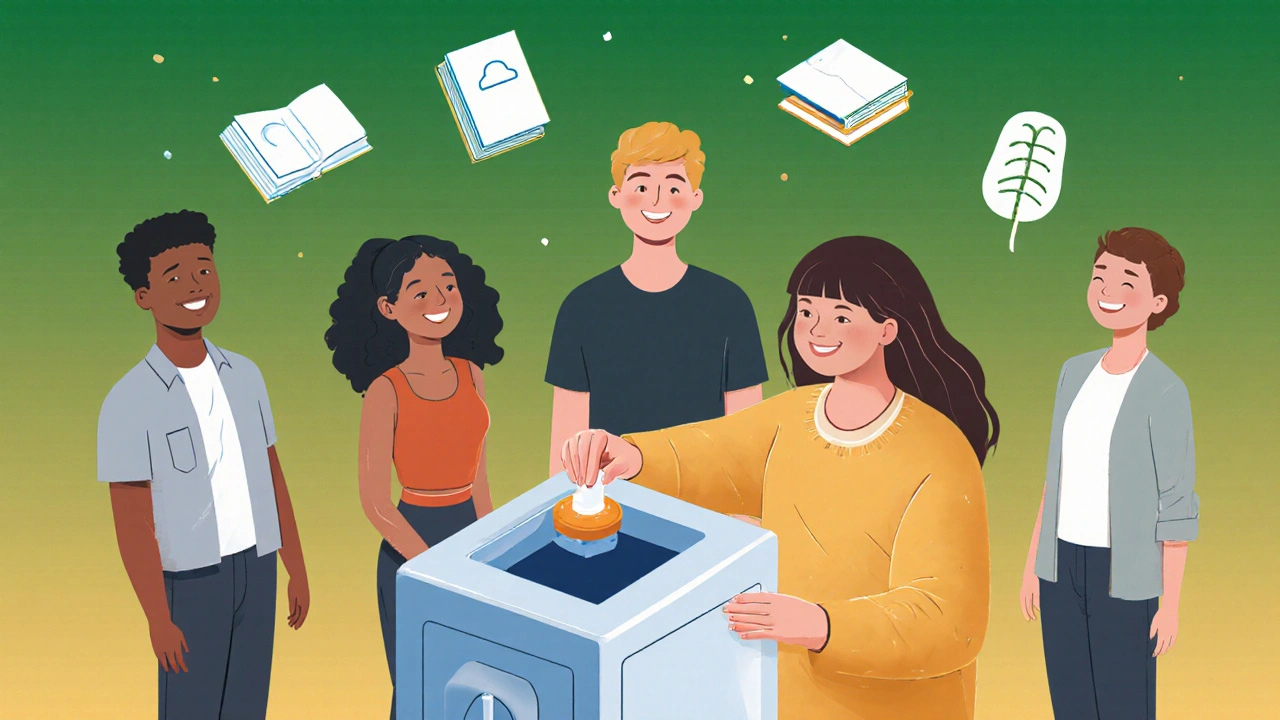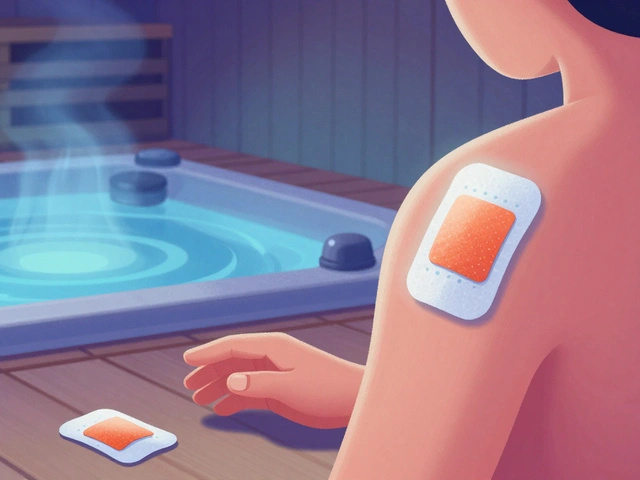Every year, millions of college students and young adults start juggling classes, part-time jobs, social life, and sleepless nights. Amid all that chaos, many turn to prescription drugs-not because they’re sick, but because they think it’ll help them keep up. Adderall for studying. Oxycodone for a bad back. Xanax to calm down before a big presentation. It’s not rare. It’s not harmless. And it’s not safe.
Why Prescription Drugs Are a Big Problem on Campus
Young adults aged 18 to 25 are the most likely group in the U.S. to misuse prescription medications. According to the National Survey on Drug Use and Health, more than 1 in 7 college students have misused a prescription drug at least once in their lifetime. The numbers don’t lie: stimulants like Adderall and Ritalin are the top choice. Why? Because students believe they’ll boost focus, energy, and grades. But here’s the truth-taking someone else’s prescription doesn’t make you smarter. It just makes you riskier.
Studies show that 75% of all prescription drug misuse among college students involves stimulants. One 2021 survey found that 62% of students knew someone who misused prescription drugs in the past year-and nearly all of those cases involved stimulants. Even more alarming, 60% of these drugs come from friends, roommates, or classmates. No prescription. No doctor. Just a pill passed across a dorm room table before finals.
The Real Cost of a Quick Fix
People think, “It’s just a pill my friend has.” But prescription drugs aren’t candy. They’re powerful chemicals designed for specific medical conditions. Taking them without a diagnosis can mess with your heart, your brain, and your mental health.
Stimulants can raise your blood pressure, trigger panic attacks, and cause irregular heartbeat. In extreme cases, they’ve led to heart attacks in healthy 20-year-olds. The CDC reports that emergency room visits linked to stimulant misuse among young adults tripled between 2005 and 2010. And it’s not just physical. Misusing these drugs increases the risk of anxiety, depression, and addiction. One student told a campus health counselor, “I thought Adderall would help me pass my exams. Instead, I couldn’t sleep for three days, and I started having panic attacks every time I walked into class.”
Painkillers and sedatives are just as dangerous. OxyContin, Vicodin, and Xanax can slow your breathing to dangerous levels-especially when mixed with alcohol or other drugs. And here’s something few realize: even if you don’t get addicted, your body learns to depend on them. You start needing more just to feel normal. That’s how dependence turns into addiction.
Who’s Most at Risk-and Why
It’s not just the “overachievers.” It’s the stressed-out, the sleep-deprived, the anxious, the lonely. The student who’s working two jobs to pay tuition. The first-gen student who feels like they have to be perfect. The athlete recovering from an injury and prescribed opioids. The person with undiagnosed ADHD who thinks a friend’s Adderall is their only option.
Men are more likely to misuse stimulants than women-14.8% of male college students report using Adderall without a prescription, compared to 7.4% of women. But women are more likely to misuse sedatives and painkillers. Regional differences matter too. In states with higher prescription rates, misuse is higher. And part-time students? They’re even more at risk than full-time students, likely because they juggle more outside responsibilities with less campus support.
The pressure to perform is real. A 2019 study from the University of Texas found that academic stress, irregular sleep, and a party culture all feed into this behavior. Students don’t start using drugs because they want to get high. They start because they feel like they have no other way to survive.
How These Drugs Get Into Your Hands
You might think, “I’d never take someone else’s pills.” But the truth is, most students don’t buy them off the street. They get them from people they know. A roommate with ADHD leaves their Adderall on the nightstand. A friend says, “I’ve got extra Xanax-take one before your presentation.” A cousin gives you leftover painkillers after surgery. It feels harmless. It’s not.
Research shows that 60% of misused prescriptions come from friends or family. That’s not a black market. That’s your dorm. Your family kitchen. Your best friend’s backpack. And because these drugs are legal when prescribed, people don’t see the danger. They think, “It’s not illegal if it’s a prescription.” But using it without a prescription? That’s illegal. And dangerous.
What You Can Do to Stay Safe
Medication safety isn’t about fear. It’s about knowledge and habits.
- Never share your meds. Even if you’re not using them anymore, keep them locked up. A pill you don’t need could be the one that ruins someone else’s life.
- Never take someone else’s meds. No exceptions. Not even for “one time.”
- Store your prescriptions securely. Use a lockbox or a locked drawer. Don’t leave them on your desk or in your backpack.
- Dispose of unused meds properly. Most campuses now have drop-off kiosks. If yours doesn’t, mix pills with coffee grounds or cat litter, seal them in a bag, and throw them in the trash. Never flush them.
- Ask questions. If your doctor prescribes you something, ask: “What’s this for? What are the risks? Are there non-drug options?”
And if you’re struggling with stress, anxiety, or sleep? Talk to someone. Campus counseling centers, health clinics, and peer support groups exist for a reason. You don’t need a pill to get through finals. You need support.

What Colleges Are Doing About It
Some schools are finally catching up. The University of Florida’s “Safe Meds” program gave students free lockboxes and installed disposal kiosks across campus. Within two years, stimulant misuse dropped by 18%. The University of Michigan combined academic coaching with medication safety workshops. They cut stimulant misuse by 22% and helped 47% more students use tutoring services.
Pharmacies on campus now train student pharmacists to spot warning signs. The DEA’s move to require electronic prescriptions for controlled substances reduced fake prescriptions on campus by 31%. And in 2023, the federal government gave $25 million to colleges to expand prevention programs.
But the real change comes from students. When someone speaks up-“Hey, I saw you taking Adderall. You know that’s not safe, right?”-it matters. Peer-led education works better than posters on a wall.
It’s Not Just About Pills
Medication safety isn’t just about stopping misuse. It’s about creating a culture where students don’t feel like they need drugs to survive. Where asking for help isn’t a sign of weakness. Where sleep, nutrition, and time management are valued as much as grades.
There’s no shortcut to success. And taking someone else’s prescription won’t make you better. It’ll just make you sicker.
Next time you’re tempted to grab a pill from a friend’s drawer, ask yourself: Is this helping me-or just hiding the problem? Because the real test isn’t your GPA. It’s whether you’re still standing at the end of the semester. And not just physically. Mentally. Emotionally. Whole.
Is it illegal to take someone else’s prescription medication?
Yes. Even if the medication was prescribed to someone else, taking it without a prescription is illegal under federal law. It’s classified as misuse of a controlled substance, and you can face legal consequences, including fines or even criminal charges, especially if caught on campus.
Can I get addicted to stimulants like Adderall if I only use them during finals?
Yes. Addiction doesn’t require daily use. Stimulants change your brain’s dopamine system, and even occasional misuse can lead to dependence. Many students who start with “just one pill before exams” end up needing more to feel focused, then experience withdrawal when they stop. That’s the early sign of addiction.
What should I do if I think a friend is misusing prescription drugs?
Talk to them privately, without judgment. Say something like, “I’ve noticed you’ve been taking Adderall a lot lately. Are you okay?” Offer to go with them to campus health services. Don’t confront them in front of others or threaten to report them-that usually makes things worse. Support is more powerful than shame.
How can I safely dispose of unused prescription drugs?
Many college campuses have medication disposal kiosks near the health center or pharmacy. If yours doesn’t, mix pills with an unappealing substance like used coffee grounds or cat litter, seal them in a plastic bag, and throw them in the trash. Never flush them down the toilet-this pollutes water systems. Some pharmacies also offer take-back programs.
Are there alternatives to prescription stimulants for staying focused?
Absolutely. Studies show that regular sleep, scheduled study breaks, physical activity, and time-blocking techniques improve focus better than stimulants. Many campuses offer free academic coaching, mindfulness workshops, and sleep hygiene programs. Talking to a counselor can also help if anxiety or ADHD is driving the urge to use drugs.
Do prescription drug misuse rates differ between full-time and part-time students?
Yes. Part-time students have higher rates of illicit drug use overall-including prescription drugs-because they often juggle work, family, and school with less access to campus resources. Full-time students are more likely to misuse stimulants for academic reasons, while part-time students are more likely to use painkillers or sedatives to cope with stress or chronic pain.
Final Thoughts: You’re Not Alone
If you’ve ever thought about taking someone else’s pill, you’re not broken. You’re just overwhelmed. The system isn’t built for students to thrive under constant pressure. But you don’t have to choose between your health and your grades.
There are people on campus who want to help-counselors, pharmacists, peer educators, even professors. Reach out. Ask for time. Ask for support. Ask for a better way. The right path isn’t the one that feels easiest in the moment. It’s the one that keeps you alive, healthy, and yourself-long after finals are over.





Russ Bergeman on 19 November 2025, AT 23:21 PM
I mean, come on. Everyone knows Adderall is just coffee with extra steps. I took my roommate’s pill before a midterm and aced it. No big deal. And yeah, I slept for 12 hours after. So what? It worked.Also, why are we acting like this is a crisis? It’s not like we’re snorting coke. It’s a pill. From a friend. Chill.